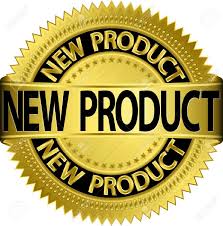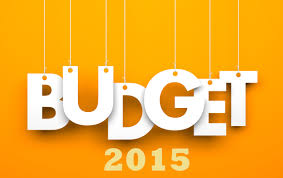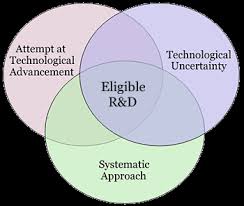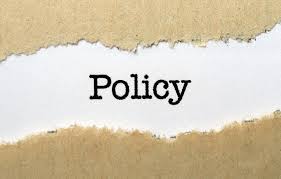The SR&ED program is a tax credit system designed to encourage Canadian businesses to  make technological and process improvements and make Canada a world leader in advanced technology.
make technological and process improvements and make Canada a world leader in advanced technology.
It’s an amazing financial opportunity for businesses to take advantage of across a wide variety of industries, but eligibility for the program can be confusing.
This article is intended to take some of the mystery out of the process of determining whether your R&D project is SR&ED eligible. So, if you’re wondering, “Is My Project Eligible for SR&ED funding?,” this 5 easy question SR&ED eligibility guide will help you decide whether or not to move forward with a claim.
What is the SR&ED Program?
The scientific research and experimental develop program (SR&ED) is an R&D tax credit incentive offered by the Federal Government of Canada which pays more than 20,000 eligible Canadian Controlled Private Corporations in excess of $3 Billion (CDN) each year.
Basic SR&ED Eligibility
Almost any Canadian company can be eligible to apply for Scientific Research and Experimental Development (SRED). Here are the basic eligibility criteria from a company perspective:
- Your research & development took place within Canada
- You have proof of expenditures related to the claimed projects, for example T4s, and/or invoices
- You have ownership of the Intellectual Property resulting from the project
- You are in good standing with government financial reporting
- Your project expenses were incurred within 18 months of the fiscal year-end as of filing
The definition of technological advancements can be interpreted broadly and therefore is not limited to specific industries. A wide range of industries submit SR&ED claims each year, including:
- Software
- Information Technology, inclusive of hardware, software and electronics
- Manufacturing
- Agribusiness
- Chemicals
- Food and Beverage
- Health Care and Medical
- Machinery & Equipment
- Plastics and Materials
- Pharmaceuticals
- Textiles
- Real Estate and Construction
What many businesses don’t realize is that some of the routine business challenges they face each year could be eligible for the SR&ED tax credit. The following 10 SR&ED examples show different cases of its application.
5 Easy Question SR&ED Eligibility Guide
The Canada Revenue Agency (CRA) determines whether or not your project meets the Scientific Research & Experimental Development(SR&ED) specifications using the following three criteria:
- Technological Advancement – furthered technical knowledge
- Technological Uncertainty – faced technical challenges or uncertainties
- Technical Content – went through an iterative process to try and overcome those challenges or uncertainties
This is great, if you understand what they mean by it! The following 5 easy question SR&ED eligibility guide should help you arrive at the right conclusions.
1. “Was there a scientific or a technological uncertainty that could not be removed by standard practice/engineering?”
This is often misunderstood. It is not that a product or process is “new” that makes it SRED. Developing a new product may not necessarily be a SR&ED eligible product unless some technological uncertainty was overcome in the process. If a new widget however, used a new manufacturing process or material that needed experimentation to develop, it’s a sign that technological uncertainty existed. Even if the experimentation ended in failure, this part of the project could still be claimed as a SRED.
2. “Did the effort involve formulating a hypothesis specifically aimed at reducing or eliminating the uncertainty?”
Further to the above point, if there is an unknown factor in developing a product or service, it stands to reason that there will be one or several approaches that will be tested in order to overcome it. Following the scientific method of hypothesis testing indicates a SR&ED project and should be documented to support the claim.
3. “Was the adopted procedure consistent with the total discipline of the scientific method, including formulating, testing, and modifying the hypothesis?”
As in any iterative process, a hypothesis must be tested and modified based on the results. Again, it shows the CRA that a scientific model was followed and that a true technological uncertainty existed.
4. “Did the process result in a scientific or technological advancement?”
Whether successful or not, the testing of a hypothesis will lead to a conclusion – hopefully to a solution. The solution is considered a technological advancement if it means you are now able to complete a process, product or service that you previously were not able to. If the testing does not lead to a successful solution, the R&D work done is still SR&ED eligible.
5. “Was a record of the hypothesis tested and results kept as the work progressed?
Since the process involved in SR&ED work, i.e. the scientific method, is important in determining the eligibility of a claim, it’s important to document it completely. Time tracking of individuals on a project is especially critical to document accurately as wages associated with a SR&ED project are one of the main components of a claim.
Contact us today for a free, no-risk consultation.
Since claiming SR&ED is complex and you do not want to reviews or rejections of your claim it is wise to have the support of a SR&ED professional. Many of our new clients see a significant increase in their SRED refunds when using our end-to-end services.
We’ll help you catch non-intuitive expenses and activities that are routinely overlooked or unclaimed as well as help you implement a tracking tool to simplify the process of your future claims.
With zero upfront fees, there is absolutely no risk to your business to access our time proven support!









